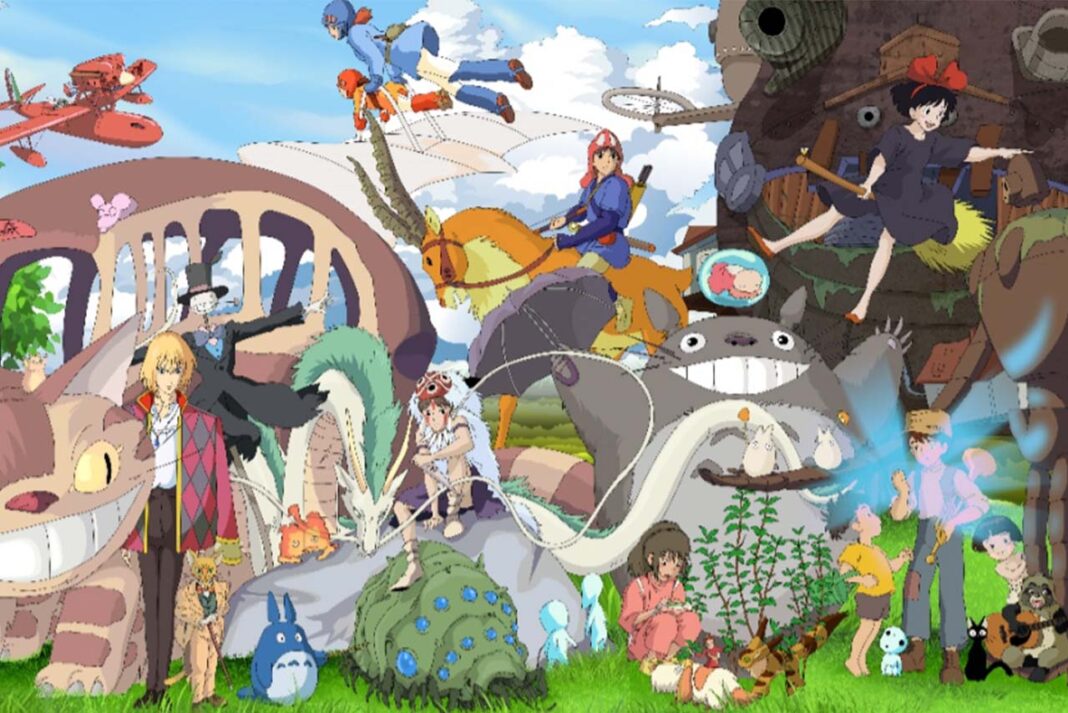“Life is so hard, so painful. The world is cursed. But still, you find reasons to keep living…”
— From Princess Mononoke
The Psychology Within Imagination
Studio Ghibli films are not merely fantastic tales aimed at children; they are profound psychological narratives about the fragility and recovery power of the human spirit.
Within these imagination-woven worlds, themes such as loss, war, separation from nature, migration, and loneliness frequently appear. Yet, amid these hardships, the characters often seek — and eventually find — ways to reconnect, discover meaning, transform themselves, and build a better life together.
In this sense, Ghibli films are among the finest artistic representations of psychological resilience.
This article explores the concept of psychological resilience in Ghibli animations through the lenses of childhood, nature, loss, and the search for meaning.
Understanding Psychological Resilience
Psychological resilience is defined as the capacity to cope with, adapt to, and move forward in the face of difficult and unpredictable experiences — the ability to recover and heal after negative or stressful emotional challenges (Üsküdar Üniversitesi, n.d.).
To strengthen resilience, individuals need to reflect on their own skills, enrich their experiences, build and nurture social bonds, care for their health, stay in touch with nature, reinforce their values, accept what they have experienced, and act in line with meaningful purposes and values.
Similarly, in Ghibli films, characters cultivate resilience and adapt to life by doing precisely these things. In the face of war, loss, migration, or loneliness, they accept their reality, focus on their strengths, build social connections, explore new solutions, and act according to their values — striving toward better well-being. Thus, they offer valuable examples of psychological resilience for the audience as well.
Loss and Rediscovery: Spirited Away and the Journey of Transformation
“Once you’ve met someone, you never really forget them.”
— From Spirited Away (2001)
Spirited Away (2001) tells the story of Chihiro, a young girl who, upon entering a magical world with her family, embarks on a journey of self-discovery and empowerment.
At the beginning, she is timid, dependent, and anxious. As the story unfolds, she grows into someone who can take responsibility for herself and others.
This transformation embodies a key component of resilience: the courage to move forward despite fear and the ability to connect with others.
Though Chihiro faces spirits, identity losses, and frightening trials, she learns through her mistakes, builds relationships, and rebuilds her self-worth — all while receiving support from those around her.
She fights to protect and save her loved ones. In this way, Spirited Away becomes one of the most powerful artistic representations of psychological resilience.
Enduring Through Connection with Nature: Princess Mononoke
“No matter how many weapons you have, no matter how great your technology, the world cannot live without love.”
— From Castle in the Sky (1986)
In Ghibli films, nature is not merely a backdrop — it is a living, breathing character.
In Princess Mononoke (1997), the conflict between humans and nature mirrors the individual’s inner conflicts. The human society that harms nature also damages its own psychological integrity.
Ashitaka’s curse symbolizes humanity’s separation from nature; yet he struggles to restore balance by embracing both his human side and his deep connection to the natural world.
Nature here is not just an external environment but an active partner in healing and wholeness.
Reconnecting with nature allows individuals to reflect on themselves and their relationships, helping them regain a sense of meaning after traumatic experiences (Antonovsky, 1987).
In this sense, Princess Mononoke exemplifies how reconnection with nature helps people face adversity, focus on their needs, and form healing, balanced bonds with their surroundings.
The Refuge of Innocence: My Neighbor Totoro and Childhood Resilience
“Try laughing. Whatever scares you will go away.”
— From My Neighbor Totoro (1988)
My Neighbor Totoro (1988) tells the story of two sisters whose mother is in the hospital, and who befriend magical forest creatures.
Totoro acts as a healing figure after a distressing life event.
Although anxiety, fear, and uncertainty dominate their world, the girls strengthen their coping capacity through imagination and play. They play together, support one another, and thus reinforce their emotional resilience.
In this sense, imagination and play are among the most natural ways for children to build resilience. Family members spending playful time together also contributes greatly to this process.
As Donald Winnicott (1971) emphasizes, the space of play enables safe interaction with the external world.
Within it, children reorganize their fears and rebuild their sense of inner security.
My Neighbor Totoro, in this way, beautifully highlights the importance of play and family connection in fostering children’s resilience.
The Search for Meaning and Inner Transformation: Howl’s Moving Castle
“They say the best fire burns brightest when circumstances are at their worst.”
— From Howl’s Moving Castle (2004)
With profound lines like “A heart is a heavy burden,” Howl’s Moving Castle (2004) delves into themes of war, identity, and inner transformation.
When Sophie is cursed by a witch and turned into an old woman, it symbolizes feelings of invisibility and worthlessness.
Yet she accepts her new state and embarks on a journey — discovering her strength beyond appearances and reconstructing a sense of meaning.
This process mirrors Viktor Frankl’s (2006) concept of the search for meaning.
According to Frankl, even in the most challenging circumstances, if a person can ascribe meaning to their experiences, they can preserve their resilience.
Sophie’s story is an aesthetic expression of this process: creating an inner world of meaning despite external chaos, fighting for what and whom she loves, and acting according to her values.
Thus, Howl’s Moving Castle illustrates the essence of acceptance, meaning-making, and value-oriented action in building resilience.
Conclusion: The Healing Power of Imagination
“Sometimes you have to fight for the things worth fighting for.”
— From The Secret World of Arrietty
Ghibli films symbolize the healing power of imagination — of reconnecting after trauma, trusting in nature and humanity, and finding wholeness again.
These films present psychological resilience not as being unbreakable, but as the ability to bend without breaking — to accept, to act according to one’s values, and to rebuild through love and connection.
Each Ghibli character — Chihiro, Ashitaka, Shizuku, or Sophie — whispers the same message: resilience is not a miraculous strength, but a process of healing and adaptation built through love, meaning, and imagination.
Today’s world, sadly, is filled with pain and adversity: wars, genocides, ecological destruction, and forced migrations. Perhaps there are no evil witches or monstrous creatures, but there are arms dealers, greedy politicians, and exploitative businesspeople shaping policies and making life difficult.
Time with loved ones is limited, and hardship is a reality of life. That is why we need psychological resilience so deeply.
And Ghibli films — with their poetic, imaginative storytelling — gently remind us of that need and touch our souls.
May we one day live in a world where suffering fades, where greedy monsters lose their power, where wars, environmental destruction, and genocides cease to exist — a world where we can be with our loved ones, psychologically stronger, and working together for a better, more compassionate life.
References
-
Antonovsky, A. (1987). Unraveling the Mystery of Health: How People Manage Stress and Stay Well. Jossey-Bass.
-
Frankl, V. E. (2006). Man’s Search for Meaning (S. Budak, Trans.). Okuyanus Yayınları.
-
Üsküdar Üniversitesi. (n.d.). Psychological Resilience. Positive Psychology. https://uskudar.edu.tr/pozitif-psikoloji/psikolojik-saglamlik
-
Winnicott, D. W. (1971). Playing and Reality (T. B. Erdem, Trans.). Metis Yayınları.


